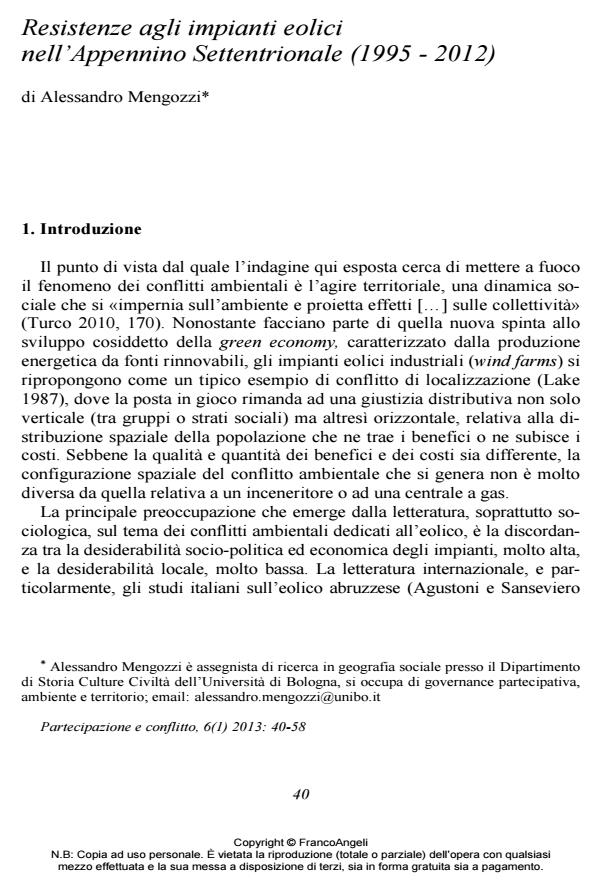Resistances to wind farms in the Northern Apennines (1995 - 2012)
Journal title PARTECIPAZIONE E CONFLITTO
Author/s Alessandro Mengozzi
Publishing Year 2013 Issue 2013/1
Language Italian Pages 19 P. 40-58 File size 195 KB
DOI 10.3280/PACO2013-001003
DOI is like a bar code for intellectual property: to have more infomation
click here
Below, you can see the article first page
If you want to buy this article in PDF format, you can do it, following the instructions to buy download credits

FrancoAngeli is member of Publishers International Linking Association, Inc (PILA), a not-for-profit association which run the CrossRef service enabling links to and from online scholarly content.
With the application of the EU incentives for renewable energy, new wind farm projects have been proliferating, in the Northern Apennines as well. The article of-fers an overview of the projects, carried out or refused, and focuses on some emblematic disputes. The fragile area considered - one of the "extremely disadvan-taged" rural area in Italy - has variedly reacted to wind farm proposals. In many cases, grassroots groups have shown no inferiority complex, being proud of living in places that they have chosen and regard as sources of wealth - provided that they remain as they are. Environmental associations are almost always very active in this area, even in the absence of local mobilizations; they constantly monitor the area and offer counter-expertise in disputes. In the light of the costs of implementa-tion of wind farms a revision of the Environmental Impact Assessment procedure, according to a more participatory approach, is suggested.
Keywords: Wind farms, local oppositions, NIMBY, green economy
- Controvento: aree marginali e populismo energetico? Indicazioni preliminari su uno studio di caso Ivano Scotti, in SOCIOLOGIA URBANA E RURALE 128/2022 pp.125
DOI: 10.3280/SUR2022-128011
Alessandro Mengozzi, Resistenze agli impianti eolici nell’Appennino Settentrionale (1995 - 2012) in "PARTECIPAZIONE E CONFLITTO" 1/2013, pp 40-58, DOI: 10.3280/PACO2013-001003